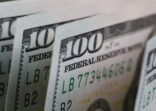Potential headwinds in high yield and other leveraged segments of the credit markets are the core concern for Oliver Blackbourn, multi-asset portfolio manager at Janus Henderson, as the investment manager factors in a more bearish outlook to the economy during the second half of the year.
“We remain concerned about the risk of a landing…That’s a concern for global markets,” he said. “I think a lot of that is going to be centred in the credit space, particularly the highly leveraged parts of the market.
“If you take the US or euro high yield market, the US high yield market has a duration of about three-and-a-half years. The euro market is a little over three. That gives you a sense of how quickly you get to have these roll offs come through.”
While numerous asset allocators have been talking up the prospects for fixed income as last year’s sell-off has created attractive entry points, high yield remains relatively out of fashion as spreads currently are not compensating sufficiently for the recession risk, in the eyes of most observers.
The ICE BofA US High Yield Index Option-Adjusted Spread, for example, was last quoted at 3.91% versus 10.87%, for example, when the coronavirus crisis first hit in March 2020.
Blackbourn pointed to numerous factors why that is likely the case including the lack of supply into the market as well as some of the positive data, particularly from the US, which has helped risk assets broadly.
Overall, Blackbourn sees opportunities in high-quality duration instead as the Federal Reserve nears the end of its rate-hiking cycle.
“If we are at peak interest rates, once you get to that last interest rate rise, you tend to see much better performance from sovereign bonds,” he said.
“Historically, from the point of the last interest rate hike, you tend to ultimately see a very positive skew in terms of return outcomes from that. So, it feels like it’s a good time to start to get positioned for that ahead of what we think are approaching peak interest rates.”
“If you take the US or euro high yield market, the US high yield market has a duration of about three-and-a-half years. The euro market is a little over three. That gives you a sense of how quickly you get to have these roll offs come through.”
Oliver Blackbourn, janus henderson
In terms of equities, Blackbourn is cautious about the recent rally, which has seen markets in the US in particular rise, with the S&P 500 index up 19% so far this year in US dollar terms.
This outperformance from US equities has been driven in particular by the AI frenzy, with the so-called magnificent seven – Amazon, Apple, Alphabet, Meta, Microsoft, Nvidia and Tesla – driving a lot of the returns.
Blackbourn noted that the rally could still have further to play out, particularly as cash positions among investors still remained high, although he cautioned that a lot of the stocks remained cyclical to some degree and given the asset manager’s bearish outlook on the economy, this was a concern.
In terms of markets, he said that there were opportunities in China as valuations were cheap, although he noted some of the macro headwinds the country currently faces such as an overleveraged property sector.
He also echoed the point that a number of market observers have been making that China’s stimulus so far has not been sufficient to offset some of the negative impact of these headwinds hence the underperformance of the Chinese stock market since the reopening rally faded in February.
“I think at some point the Chinese government is going to be forced to come up with a plan to deal with this. When you’ve got earnings that have come down as much as they have in China, you’ve got valuations that are cheap, the equity market is trading way below analysts’ expectations, you’ve got a lot of indicators telling you that things are quite cheap. You could be setting up for quite a good rally if we do get significant stimulus at some point,” he said.
On Japan, which is a market very much in vogue at the moment among asset allocators due to the country’s corporate governance reforms and expectations that the Bank of Japan will begin to unwind its ultra-loose monetary policy, he was more conservative.
“Japan obviously in local currency terms had a big rally this year. If you look at it as someone who is not a yen-based investor, unless you’ve hedged that currency move, and that will cost you a reasonable amount to do, it has been not quite as stellar. We look at that and think a lot of the move has been driven by the weaker currency and when you’ve had a bit of strength recently, you’ve seen the equity market come off.”

















